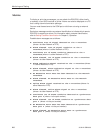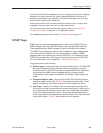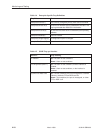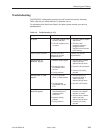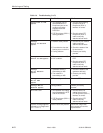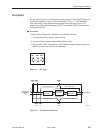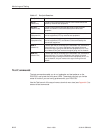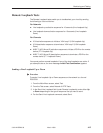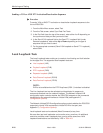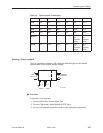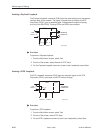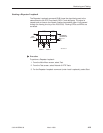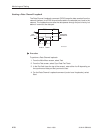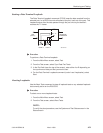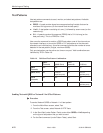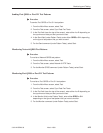
Monitoring and Testing
4-16
3162-A2-GB20-30
March 1999
Sending a V.54 or ANSI FT1 Activation/Deactivation Sequence
"
Procedure
To send a V.54 or ANSI FT1 activation or deactivation loopback sequence to the
far-end DSU/CSU:
1. From the Main Menu screen, select Test.
2. From the Test screen, select Sync Data Port Tests.
3. In the Port field (near the top of the screen), enter either 1 or 2 depending on
the synchronous data port that you want to test.
4. In the Send V.54 Loopback field or the Send FT1 Loopback field (under
Remote Loopbacks), enter either Up or Down depending on the type of
sequence that you want to send.
5. For the appropriate command (Send V.54 Loopback or Send FT1 Loopback),
select Send.
Local Loopback Tests
The Local Loopback tests enable you to conduct circuit testing and fault isolation
for the digital line. The supported local loopback tests are:
H Line Loopback (LLB)
H Payload Loopback (PLB)
H DTE Loopback (DLB)
H Repeater Loopback (RLB)
H Data Channel Loopback (DCLB)
H Data Terminal Loopback (DTLB)
NOTE:
DLB is not available when the DTE Drop/Insert (DSX-1) interface is disabled.
The Line Loopback test can be activated and deactivated in response to
commands received over the network interface. The Network Initiated LLB
configuration option controls whether the DSU/CSU responds to the commands
transmitted on the network interface to initiate LLBs (see Appendix C,
Configuration Options
).
The Network Initiated DCLB configuration option controls whether the DSU/CSU
responds to inband V.54 commands to initiate DCLB for that port (see
Appendix C,
Configuration Options
).
Local loopback tests can be aborted (Abort Command) at any time.
No more than two local loopbacks can be active at any one time. An additional
restriction prohibits certain loopbacks from running at the same time. Valid
loopback combinations are identified by YES in Table 4-8.



